Rest assured, there's a lot more coming down the pipe from Autoblog about the exceptional Ford Mustang Mach-E. As we prep those pieces, however, here's a quick appetizer.
The Mach-E looks pretty big and crossover-y in pictures, but whether on an auto show floor (awww, remember those?) or parked in the driveway, it looks much smaller in person. Thankfully, it drives that way too, but more on that in the future. Given this perception and that teardrop hatchback roofline, one would expect the Mach-E to be only slightly more convincing as a crossover than a Mustang.
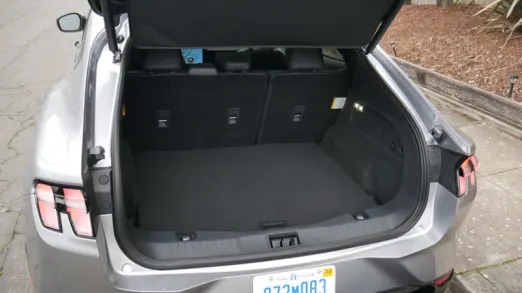
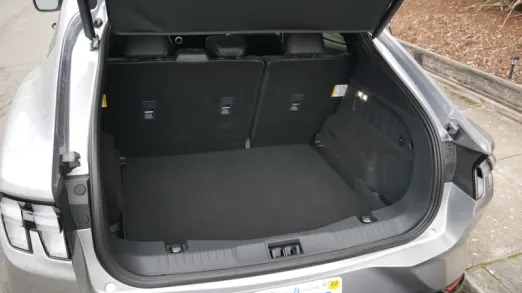
According to the specs, the Mach-E has 29.7 cubic-feet of space behind its back seat. That's nearly 3 cubes less than the Ford Escape and comparable to many compact SUVs. There are some asterisks, however.
First, there are two pictures above because the Mach-E has two floor heights. You can see the difference in height below left. The Escape has the same thing and it serves the same purpose: provide the maximum amount of space behind the back seat while allowing for a flat load floor when the back seat is folded. As we are only testing cargo space behind the back seat, I kept it at the lowest position as I did with the Escape.
Below right, you can also see the underfloor storage. Basically, there's just an area for the tire air compressor and the charge cord. Such cord bags, most often in plug-in hybrids, usually take up space in the cargo area.
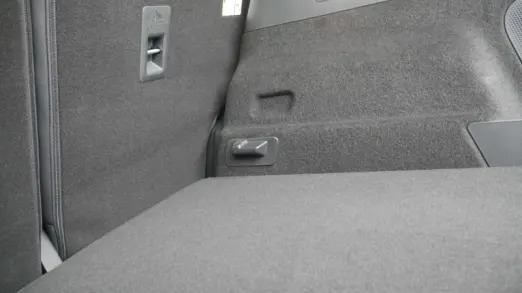
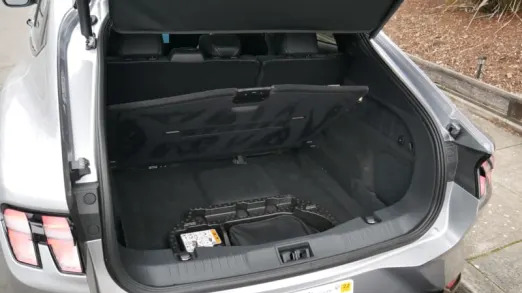
The second asterisk involves the Mach-E's crossover-coupe shape that makes comparing cubic-feet figures with more conventional SUV shapes an apples-to-oranges affair.
Basically, what you have is a large trunk with some extra spill-over space above. It's more like an Audi A7 or first-generation Mazda6 5-Door in that regard.
I mention this only to put the cubic-feet measurement into perspective and to underline that having 3 cubic-feet less than an Escape doesn't necessarily mean it'll be as comparable as the number makes it seem.
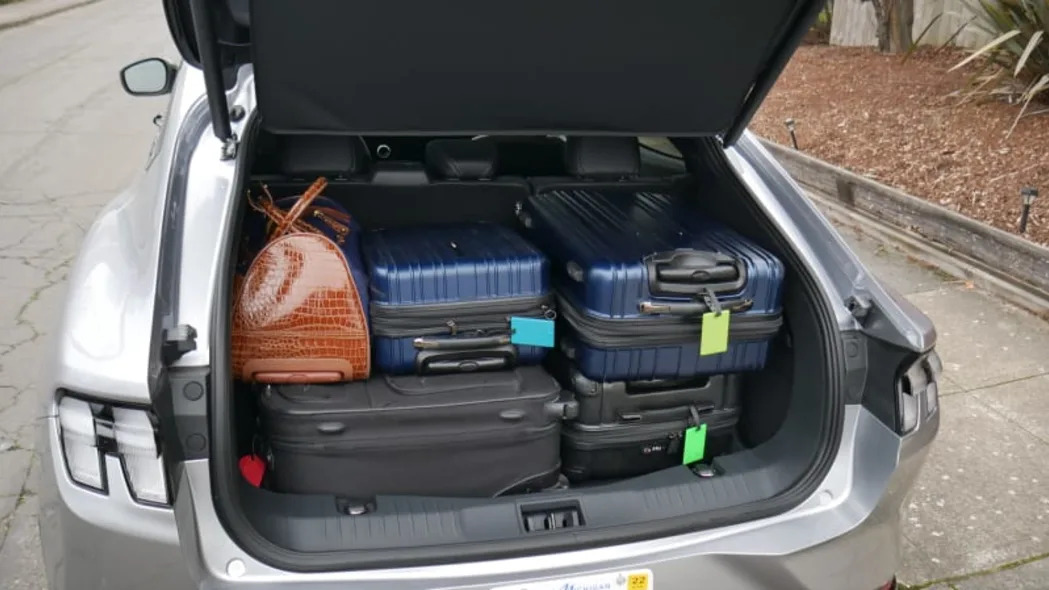
In fact, it's better than the Escape! OK, another asterisk here, but more on that later.
As in every luggage test I do, I use two midsize roller suitcases that would need to be checked in at the airport (26 inches long, 16 wide, 11 deep), two roll-aboard suitcases that just barely fit in the overhead (24L x 15W x 10D), and one smaller roll-aboard that fits easily (23L x 15W x 10D). I also include my wife's fancy overnight bag just to spruce things up a bit (21L x 12W x 12D).
All of the above fit inside with minimal Tetrising. Compare that to the Escape, below, which barely managed to fit it all.
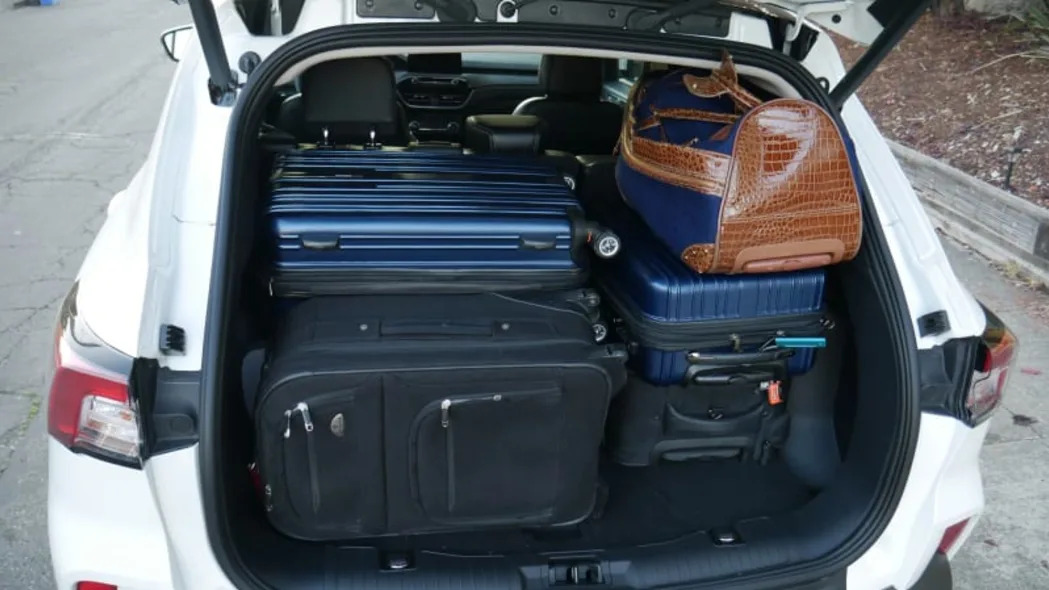
What's the difference here? Note the same bag is in the lower left of each Ford placed widthwise. In the Mach-E, I could fit the largest two bags lengthwise next to it. In the Escape, only the two medium bags could fit. In other words, the Mach-E is wider. It also seems to be longer.
As for that final asterisk, the Escape ultimately has an advantage due to its sliding and reclining back seat that increases capacity at the expense of rear passenger comfort.
Moving beyond the Ford comparison, this amount is comparable to other crossover coupes. It's basically the same as the Audi e-Tron Sportback (below left) and although the Cayenne Coupe can technically hold more (below right), it has a less functional space and is also a bigger vehicle. I also had to remove it's cargo cover.
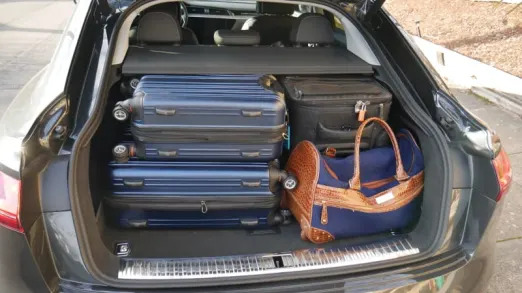
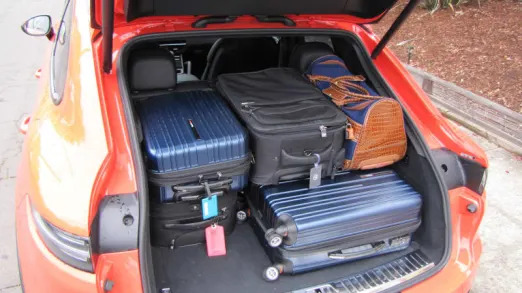
Now, speaking of cargo covers.
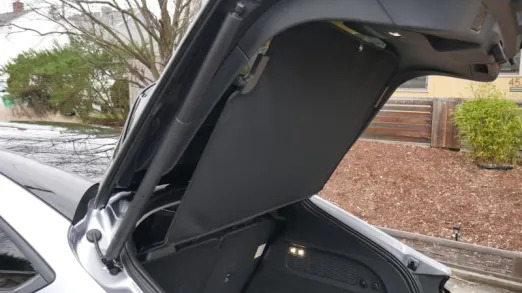

The Mach-E's is not a traditional cargo cover with a huge cartridge that plugs into the sides and takes up a boat load of cargo capacity. It's also not a rigid hatchback-style cargo cover as in the Porsche Cayenne Coupe.
It's instead a piece of mesh that plugs into points on the liftgate and the car's cargo opening.
At first blush, this might seem inelegant and not worthy of a car carrying a $50,000-plus price tag. The original Chevy Volt had a mesh cargo cover and it was awfully cheap. However, I would argue this is a smart, functional design.
First, it's incredibly thin, meaning it can cover your cargo without taking up much space and/or needing to be removed to achieve maximum cargo capacity. I almost always do these luggage tests with and without the cargo cover since it can make a huge difference. It made no difference in the Mach-E — partly because the "spill over" space above proved useless, but partly because of this cover's functionality.
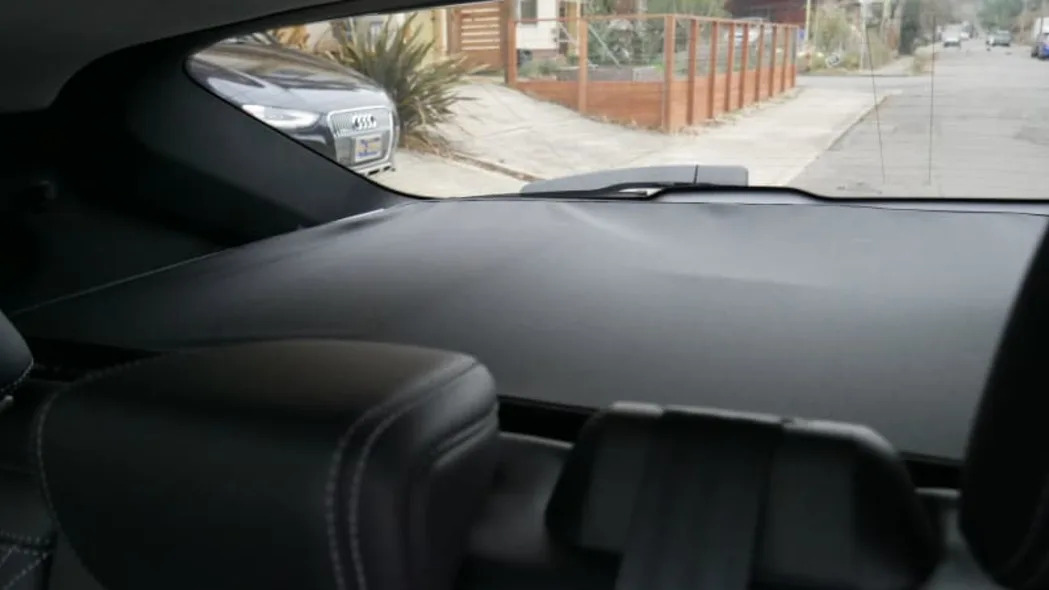
The above picture shows the cargo cover in place over all pieces of luggage. This is rare among compact SUVs.
There is a slight hitch ...
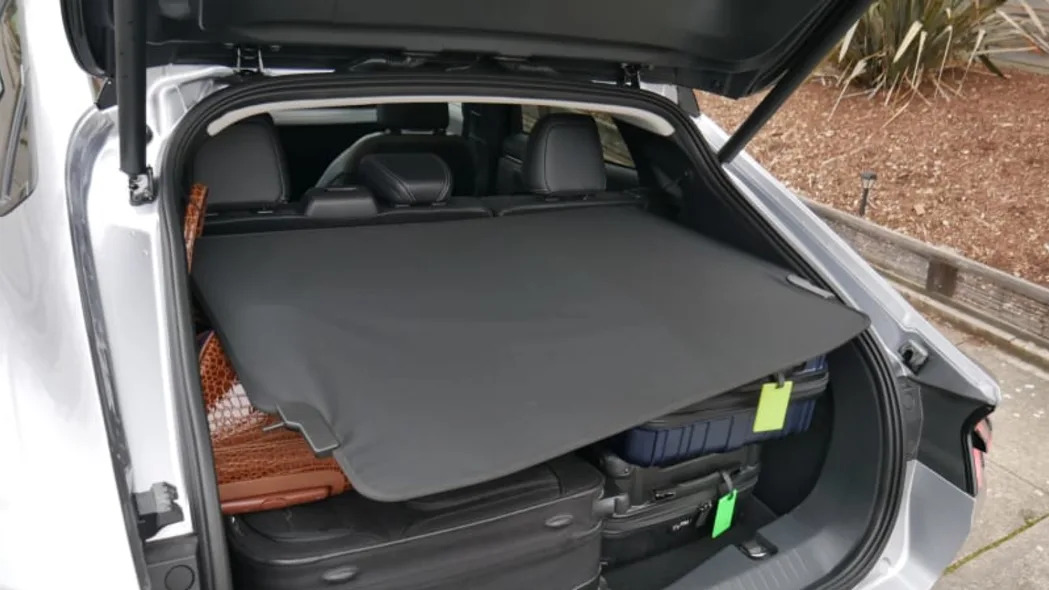
Closing the hatch and cover over all the bags dislodged the cover from its plugs, but it still did its job of covering the cargo from prying eyes. I say this is a net win.
Better still, the cover folds in on itself (not unlike a windshield sunshade or my laundry hamper) making for incredibly easy storage should it indeed get in the way of your luggage stuffing. It's so small and flat, you can stash it almost anywhere amongst the bags back there. Try that with a huge, vehicle-wide cargo cover reel.
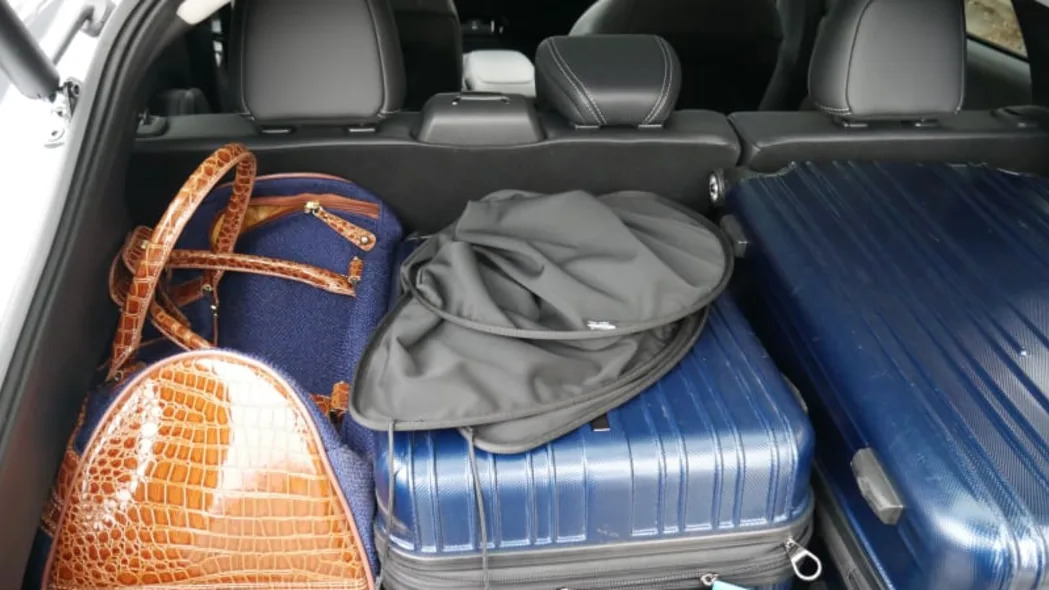
And finally, let's talk about the frunk. Ford says it can hold 4.7 cubic-feet of stuff, which is more than a Miata's trunk. It sure doesn't look that big, however, and there was this odd divider in our test car that couldn't be removed without removing plastic rivets (that I would almost certainly end up breaking).
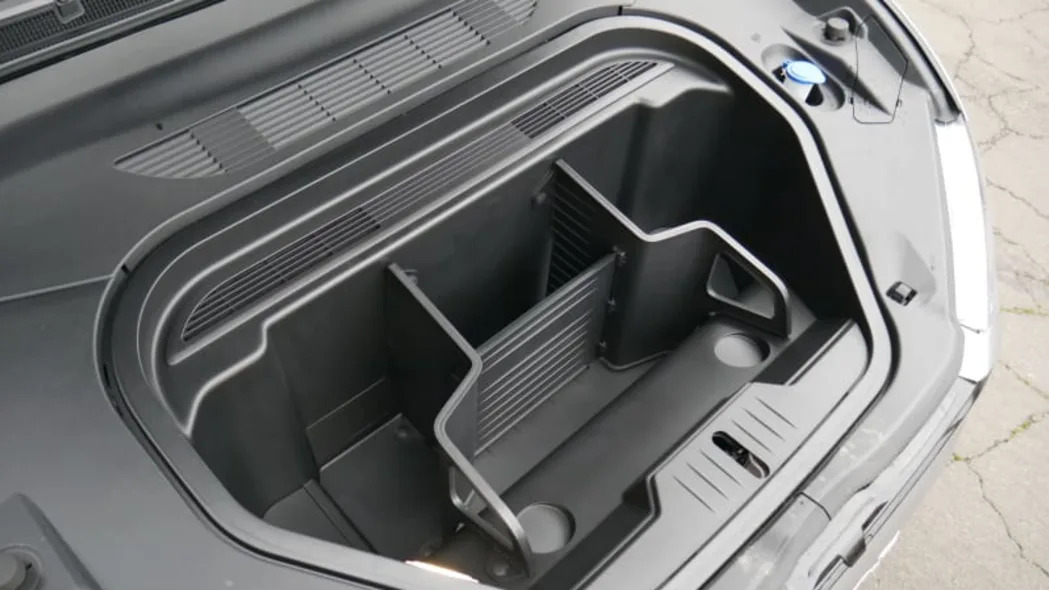
As such, the Mach-E frunk could hold precisely 0.0 bags. It does have two cupholders, though, and we already know it's good for shrimp.
And rest assured, there's still the government-mandated escape button should Buzz Lightyear or Ant-Man get locked inside.
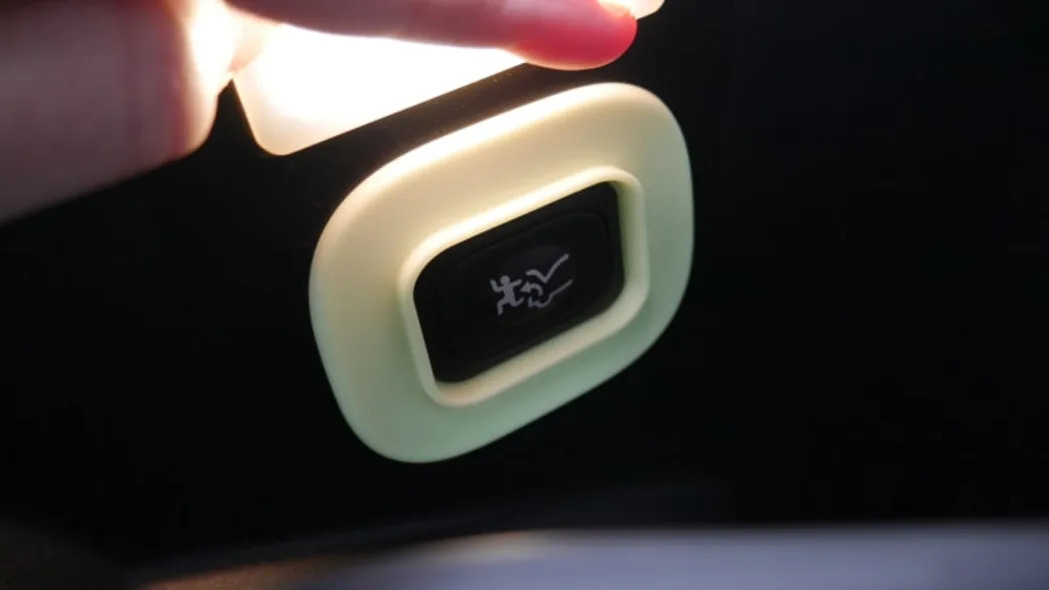
Related video:

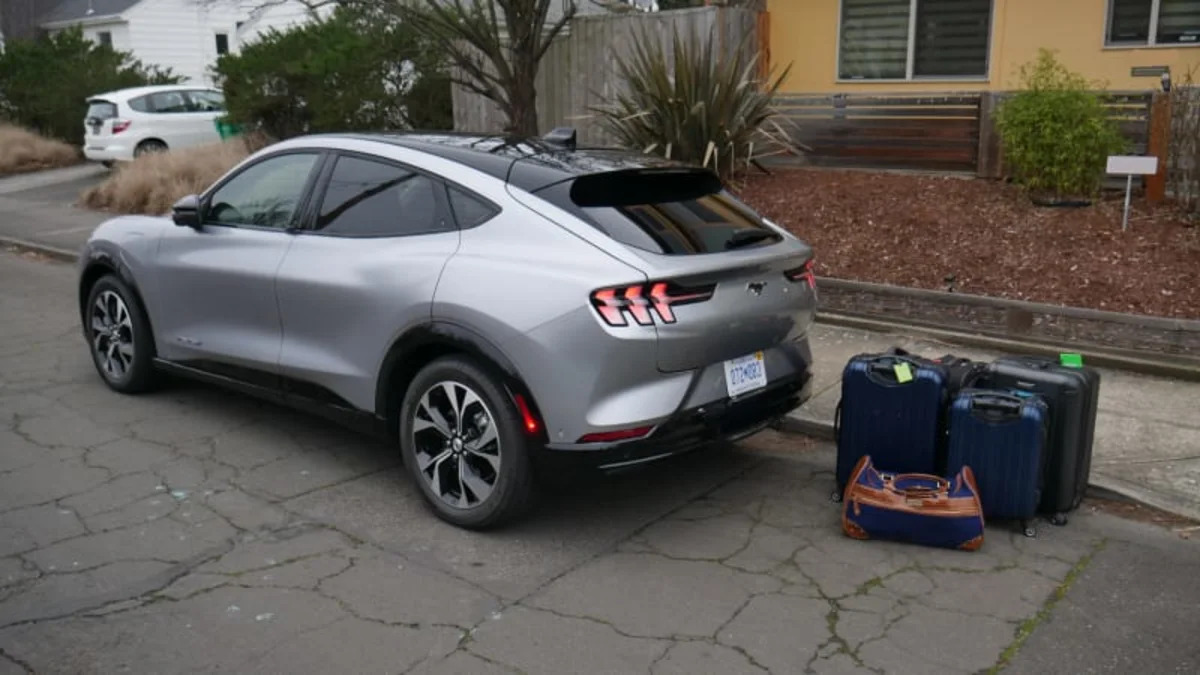

Sign in to post
Please sign in to leave a comment.
Continue